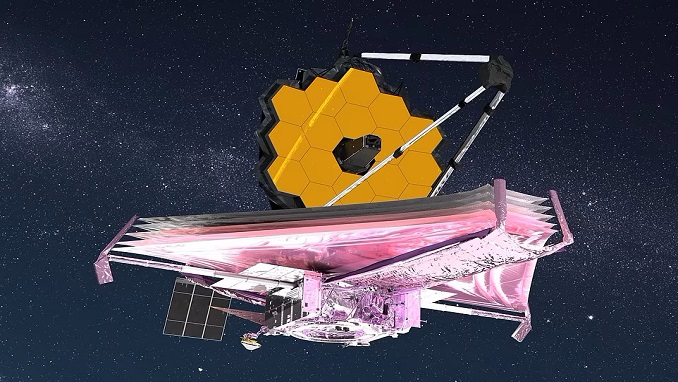
The new NASA James Webb Space Telescope has released stunning images after its one year in space. Christmas Day marked the one-year anniversary of NASA’s $10 billion Webb telescope blasting into space.
It has beamed back astonishingly beautiful images of the cosmos with unprecedented detail.
Webb was launched from Guiana Space Centre on Christmas Day 2021 with the aim of looking back in time to the dawn of the universe so it can capture what happened a couple of hundred million years after the Big Bang. It is on a mission to observe the universe in wavelengths no human eye can see.
It will spend more than a decade at an area of balanced gravity between the sun and Earth called L2 exploring the universe in the infrared spectrum, allowing it to gaze through clouds of gas and dust where stars are being born.
The telescope, named for James Webb, the NASA administrator during the buildup to the Apollo moon landings, is a joint project of NASA, the European Space Agency, and the Canadian Space Agency.
But neither NASA nor the astronomers paid all that money and political capital just for gorgeous pictures — not that anyone is complaining.
Thus far the telescope, bristling with cameras, spectroscopes, and other instruments, is exceeding expectations.

“The first images were just the beginning,” said Nancy Levenson, temporary director of the Space Telescope Science Institute, which runs both the Webb and the Hubble. “More is needed to turn them into real science.”
For three days this month, 200 astronomers filled an auditorium at the Space Telescope Science Institute to hear and discuss the telescope’s first results. Another 300 or so watched online.
It marked a belated celebration of the successful launch of the telescope last year, as well as an inauguration and preview of the technology’s bright future.
There have already been a cosmos of discoveries: Galaxies that, even in their relative youth, had already spawned huge black holes. Atmospheric studies of some of the seven rocky exoplanets orbiting Trappist 1, a red dwarf star that might harbor habitable planets.
Cosmic Cliffs, hotbeds of star formations in the Carnia constellations, were a favorite early piece of “sky candy.” Jets from new stars, shock waves, and ionizing radiation from more massive nearby stars born boiling hot are constantly reshaping the geography of the cosmos and forming new stars, showing what could be the template for how Earth’s sun was formed.
At a reception after the first day of the meeting, John Mather of NASA’s Goddard Space Flight Center and Webb’s senior project scientist from the start raised a glass to the 20,000 people who built the telescope, the 600 astronomers who had tested it in space and the new generation of scientists who would use it.

Be the first to comment